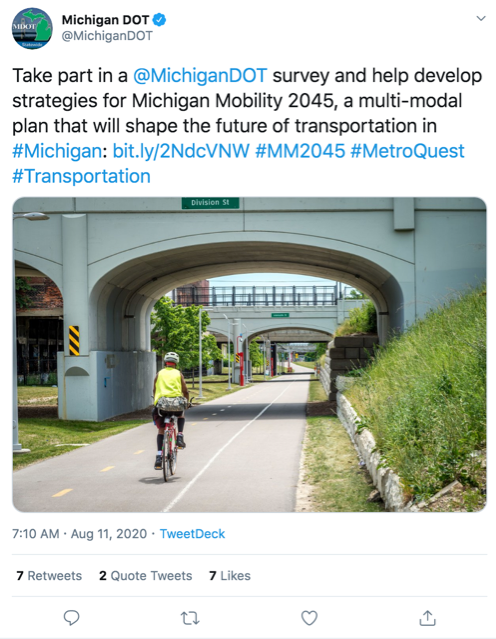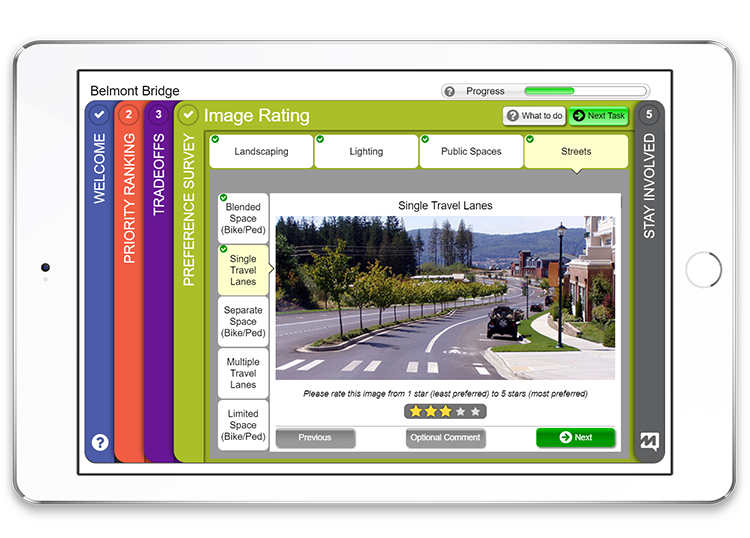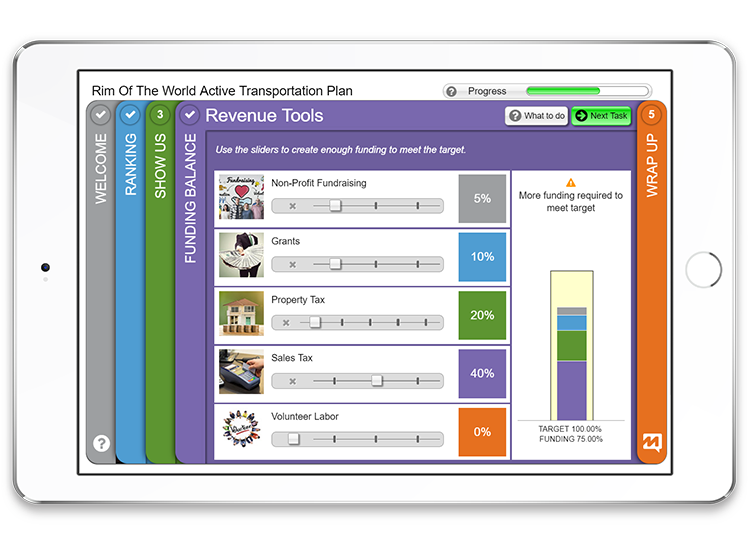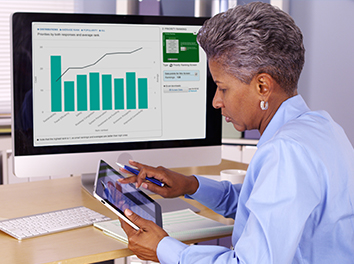The Benefits of Visual Versus Text Surveys in Public Sector Planning
![Image - [INSIGHTS] The Benefits of Visual Versus Text Surveys in Public Sector Planning [INSIGHTS] The Benefits of Visual Versus Text Surveys in Public Sector Planning](https://metroquest.com/wp-content/uploads/Image-INSIGHTS-The-Benefits-of-Visual-Versus-Text-Surveys-in-Public-Sector-Planning.jpg)
While planners have traditionally relied on public meetings to gather local input, many government agencies are expanding their public engagement toolbox and relying on digital solutions to connect with a larger audience and generate more informed and data-driven input. Especially with circumstances in 2020 making virtual public involvement vital to safe and effective engagement, understanding the benefits and disadvantages of different online tools becomes essential!
In a recent post, I outlined some of the leading online public engagement tools and complementary strategies that planners are using to help you get access to the right solutions, maximize online participation results and navigate the new, increasingly digital normal.
Today, let’s look a closer look at online surveys: the leading digital engagement tool employed by planners to achieve outstanding virtual public involvement results, and how they’re different to text-based multiple-choice surveys.
Benefits of Visual Surveys for Effective Community Engagement
It’s important to consider your public engagement goals prior to selecting the online survey software. The free or simple text survey might seem like the obvious choice, but they’re not optimized for public engagement, and may cause more issues than benefits.
Text based surveys are great for briefly gathering straight-forward information, such as in a sign-up sheet. But in community engagement, planners are tasked with educating the public and gathering informed input, which requires translating complex scenarios into simple and engaging concepts. If you need to reach a wide audience and gather meaningful input, it’s vital to make the online experience educational. This allows you to collect actionable insights to support your upcoming projects and plans. For these purposes, you will want to consider a survey platform that focuses less on text and more on visual design and interactivity.
The simple addition of images, colors, videos or interactive elements to your survey makes the online experience for participants more visually appealing, easily understood and significantly contributes to your public engagement success. Let’s explore the benefits of visual versus text-based survey design.
Visually-Appealing Surveys Yield Higher Public Participation
Eye-catching visuals captivate participants and can evoke powerful feelings. A study found that colorful visuals increase people’s willingness to read a piece of content by 80%. Surveys platforms, such as MetroQuest, that incorporate images, colorful design and interactive features are more attention-grabbing than a text-based survey and entice more individuals to participate and engage in the planning process.
Visuals Enhance the Digital Engagement Experience
Humans are visual by nature. In a study, it was found that the human brain processes images 60,000 times faster than text. By incorporating visuals into your survey design, participants can process the information and data better and more quickly than they would reading text. This enhances participants’ online experience by reducing the amount of time it takes to provide input.
Images Make Online Public Engagement More Accessible
Surveys that are primarily text-based pose challenges for individuals who have difficulty reading and writing. This could be a result of physical difficulties, perceptual disabilities or lack of fluency in the language, for example. Using visual survey design eliminates these barriers as more individuals can process images better than reading text.
Participants are More Inclined to Share Visual Surveys Socially
Individuals prefer to share pictures, infographics and videos. Visually engaging surveys are therefore more readily discussed and shared on social media compared to surveys that are primarily text-based. This organic promotion can help agencies widen and broaden their demographic reach significantly.

Incorporating Visuals into Survey Design Helps Educate Participants
Studies have also shown that using visual aids improves learning by up to 400 percent. Further, most people only read 20-28% of the words on any given page. This means that an individual participating in a text-based survey is unlikely to completely read all of the questions and fully comprehend the topics being addressed. Incorporating visuals helps facilitate learning by stimulating participants’ cognitive capabilities which, in turn, helps them better grasp complex planning concepts and provide more informed input.
Visual surveys have a wide range of benefits, including making your strategy more accessible, helping participants better grasp complex projects and encouraging a much broader and wider group of individuals to engage.
To learn more about the benefits of using visual online surveys for virtual public involvement, check out our recent webinar: Essential Online Public Engagement Toolbox for Planning.
Essential Online Public Engagement Toolbox for Planning
In this webinar, our expert panelists identify the leading online tools to help you achieve your best engagement results and explore promising practices for delivering outstanding public engagement experiences online.


